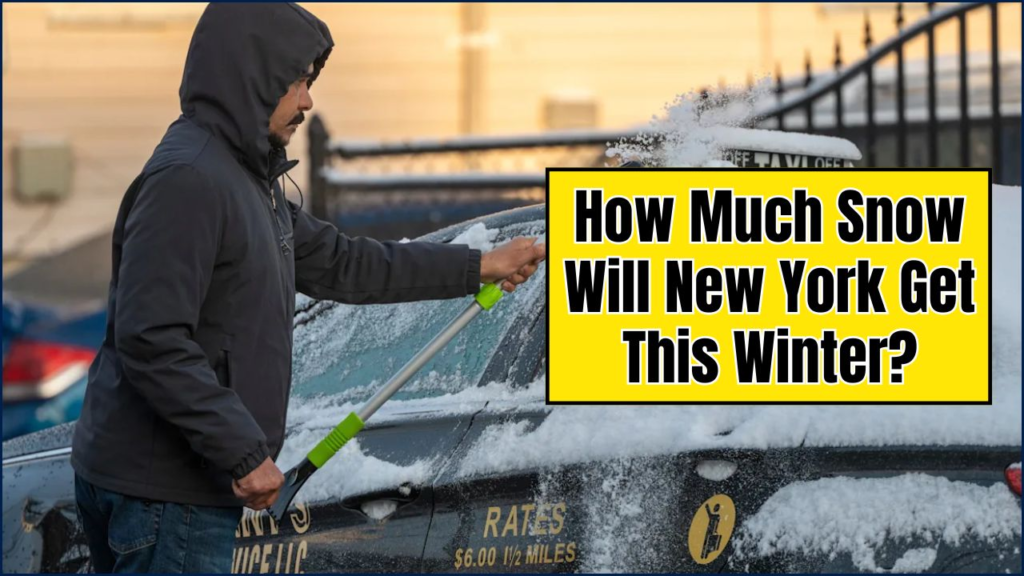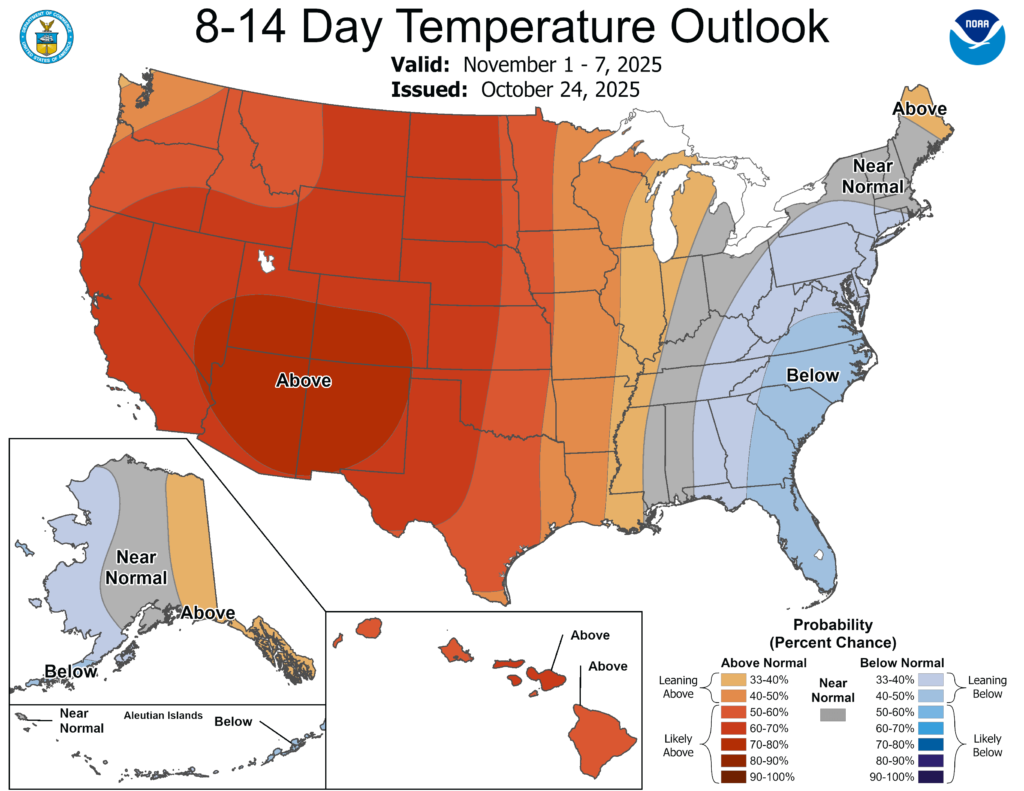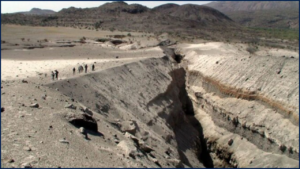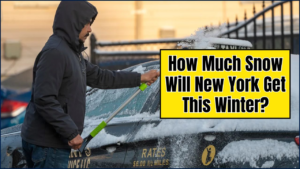
The National Oceanic and Atmospheric Administration (NOAA) has released its 2025–2026 winter outlook, projecting warmer-than-average temperatures across much of the United States, including the Northeast, but also forecasting the potential for above-average snowfall in parts of New York due to increased precipitation and shifting storm tracks.
Table of Contents
NOAA 2025-26 Forecast
| Key Fact | Detail / Statistic |
|---|---|
| Winter temperature outlook | Warmer-than-average temperatures for most of the Northeast |
| Precipitation forecast | Above-normal precipitation in parts of New York and New England |
| ENSO conditions | Expected transition to weak La Niña or ENSO-neutral conditions |
| Potential snowfall impact | Above-average snowfall possible in interior and upstate regions |
| Official Website | NOAA Climate Prediction Center |
Warmer Temperatures, Wetter Conditions in the Northeast
The National Oceanic and Atmospheric Administration (NOAA) released its 2025–2026 winter outlook this week, projecting that much of the Northeast, including New York State, will experience warmer-than-average temperatures from December through February.
However, forecasters also anticipate above-normal precipitation, a combination that could bring more frequent mixed precipitation events to lower elevations while increasing the chance of significant snowfall in colder, inland areas.
“Even with a warmer seasonal outlook, winter weather impacts can be severe,” said Jon Gottschalck, chief of the NOAA Climate Prediction Center. “A single nor’easter can significantly change seasonal snowfall totals for a region.”

La Niña Expected to Shape the Season
This year’s forecast is influenced by the expected transition from El Niño to a weak La Niña pattern in the Pacific Ocean. La Niña winters often bring wetter and stormier conditions to the northern U.S., including the Great Lakes and Northeast.
“La Niña winters typically favor an active storm track across the northern states,” explained Dr. Michelle L’Heureux, a NOAA climate scientist. “For the Northeast, this can mean more opportunities for nor’easters, particularly if cold air is in place.”
While New York City and coastal areas may see more rain or mixed precipitation, upstate New York—especially regions like the Adirondacks and Tug Hill Plateau—could experience above-average snowfall if storms align with cold air masses.
Historical Snowfall Trends and Major Storms
NOAA records show that New York’s winter climate has changed significantly over the past 50 years. Seasonal snowfall totals in New York City have become more variable, with some years producing well below average totals and others bringing record-breaking storms.
| Winter Season | NYC Total Snowfall | Notable Event |
|---|---|---|
| 1995–96 | 75.6 inches | Historic blizzard, January 1996 |
| 2010–11 | 61.9 inches | Multiple nor’easters; travel disruptions |
| 2015–16 | 32.8 inches | January 2016 blizzard (27.5 inches in one storm) |
| 2021–22 | 17.0 inches | Below-average snow |
| 2024–25 | 10.2 inches | Warm winter, few significant storms |
“New York’s snowfall is increasingly concentrated in fewer but more intense storms,” said Dr. Judah Cohen, director of seasonal forecasting at Atmospheric and Environmental Research. “This pattern fits what we’re seeing in a warming climate.”
Regional Forecast Breakdown
New York City and the Downstate Region
NOAA projects above-average precipitation but warmer-than-normal temperatures, meaning much of the winter could see rain or wintry mixes. Still, forecasters estimate 17 to 21 inches of snow for the 2025–26 season—above last year but below the long-term average.
Hudson Valley and Capital Region
With slightly cooler temperatures and storm track proximity, these regions may experience frequent snow-to-rain events and near- to above-normal snow totals. Ice storms are also a concern when warm and cold air masses meet.
Western New York (Buffalo and Lake Erie region)
This area is highly susceptible to lake-effect snow. A combination of mild lake temperatures and cold air intrusions could bring significant snowfalls, potentially exceeding seasonal averages.
Adirondacks and Tug Hill Plateau
These snowbelt areas are expected to be among the hardest hit, with well above-average snowfall potential, thanks to elevation and proximity to moisture sources.
How Winter Weather Impacts Daily Life
New York’s winter weather has significant infrastructure and economic implications. Heavy snow can disrupt transportation, shut down schools, and slow economic activity.
- Transportation: Snowstorms can cause major delays at LaGuardia, JFK, and Newark airports. In January 2016, a single storm grounded more than 8,000 flights nationwide.
- Energy demand: Colder spells can strain the state’s power grid, particularly in rural communities.
- Tourism: Ski resorts in the Adirondacks, Catskills, and Finger Lakes stand to benefit from a snowier season, potentially boosting local economies.
“The ski industry is especially sensitive to snowfall variability,” said Tom Horak, president of the New York Ski Areas Association. “A strong snow season can make or break local businesses.”
Emergency Response and Preparedness
State and local agencies are stepping up winter preparedness. The New York State Division of Homeland Security and Emergency Services has increased coordination with local governments, utilities, and the Federal Emergency Management Agency (FEMA) to ensure rapid response to major winter storms.
Key initiatives include:
- Expanded snow removal fleets for major cities.
- Backup power and heating systems for emergency shelters.
- Pre-positioned salt and sand supplies for state highways.
- Improved communication systems for severe weather alerts.
Governor Kathy Hochul has emphasized preparedness. “Even a single storm can have lasting impacts on families, businesses, and infrastructure,” she said at a recent briefing. “We are taking proactive steps to ensure New York is ready.”
Technology Is Making Forecasting Smarter
Advances in forecasting technology have improved NOAA’s ability to predict winter patterns. Modern satellite systems, AI-powered models, and ensemble forecasting offer higher accuracy and longer lead times.
“Five to ten years ago, we couldn’t reliably predict seasonal snow trends with this level of detail,” explained Dr. Sarah Kaplan, a meteorologist at the National Weather Service. “Now we can give communities weeks or months to prepare.”
New York State also uses real-time sensor networks on major highways to monitor road surface conditions, improving snow removal response and reducing accidents during storms.
Climate Change and the Future of Winter in New York
Climate scientists warn that warmer winters do not mean fewer dangerous snowstorms. Warmer air holds more moisture, which can increase the intensity of storms when cold air is present.
According to NOAA, winter temperatures in the Northeast have risen by about 2.5°F over the past 50 years. Seasonal snow cover has declined, but extreme snowfall events have increased in intensity.
“This is the paradox of winter in a warming climate,” said Dr. Katharine Hayhoe, chief scientist at The Nature Conservancy. “We’re seeing shorter winters overall but more powerful storms when they do occur.”

Travel and Safety Guidance
With variable conditions expected, officials are encouraging residents to prepare early:
- Check emergency kits for flashlights, blankets, and food.
- Sign up for weather alerts through the National Weather Service (NWS).
- Plan travel carefully during potential nor’easters.
- Winterize vehicles and homes to reduce the impact of power outages or road closures.
The Transportation Security Administration (TSA) has also advised travelers to monitor airport status closely, as winter storms can ripple through the entire air travel system.
Looking Ahead
NOAA will update its seasonal outlook throughout the winter as atmospheric conditions evolve. The agency emphasizes that local snowfall depends on short-term weather patterns and individual storm events, not just seasonal trends.
“Seasonal outlooks give us the big picture,” said Gottschalck. “But it’s the week-to-week forecasts that determine how much snow actually falls.”
Residents, businesses, and travelers are encouraged to stay informed and take preparedness measures seriously.
November 2025 SNAP Payment Dates Released — Check When Your Benefits Arrive
$14 Billion Restored: 3.1 Million Retirees Get Full Social Security Benefits Back
U.S. Minimum Wage Increase 2025 – New Pay Rates Effective October 25
FAQ About How Much Snow Will New York Get This Winter
Will New York City get a lot of snow this winter?
NOAA forecasts suggest warmer-than-average temperatures and above-normal precipitation. New York City may receive around 17–21 inches of snow, slightly above last winter’s total.
Why does a warmer winter still mean more snow?
Warmer air can hold more moisture. If cold air coincides with storm systems, this can lead to heavier snowfall events, especially inland.
Where is the highest snowfall expected?
Upstate New York, including the Tug Hill Plateau and Adirondacks, could see above-average snowfall due to lake-effect storms and a more active storm track.
What can residents do to prepare?
Officials recommend checking emergency supplies, signing up for weather alerts, and winterizing homes and vehicles ahead of potential storms.
Does climate change affect winter storms?
Yes. While winters are getting warmer overall, the increased moisture in the atmosphere can intensify snowfall when cold air is present.
















